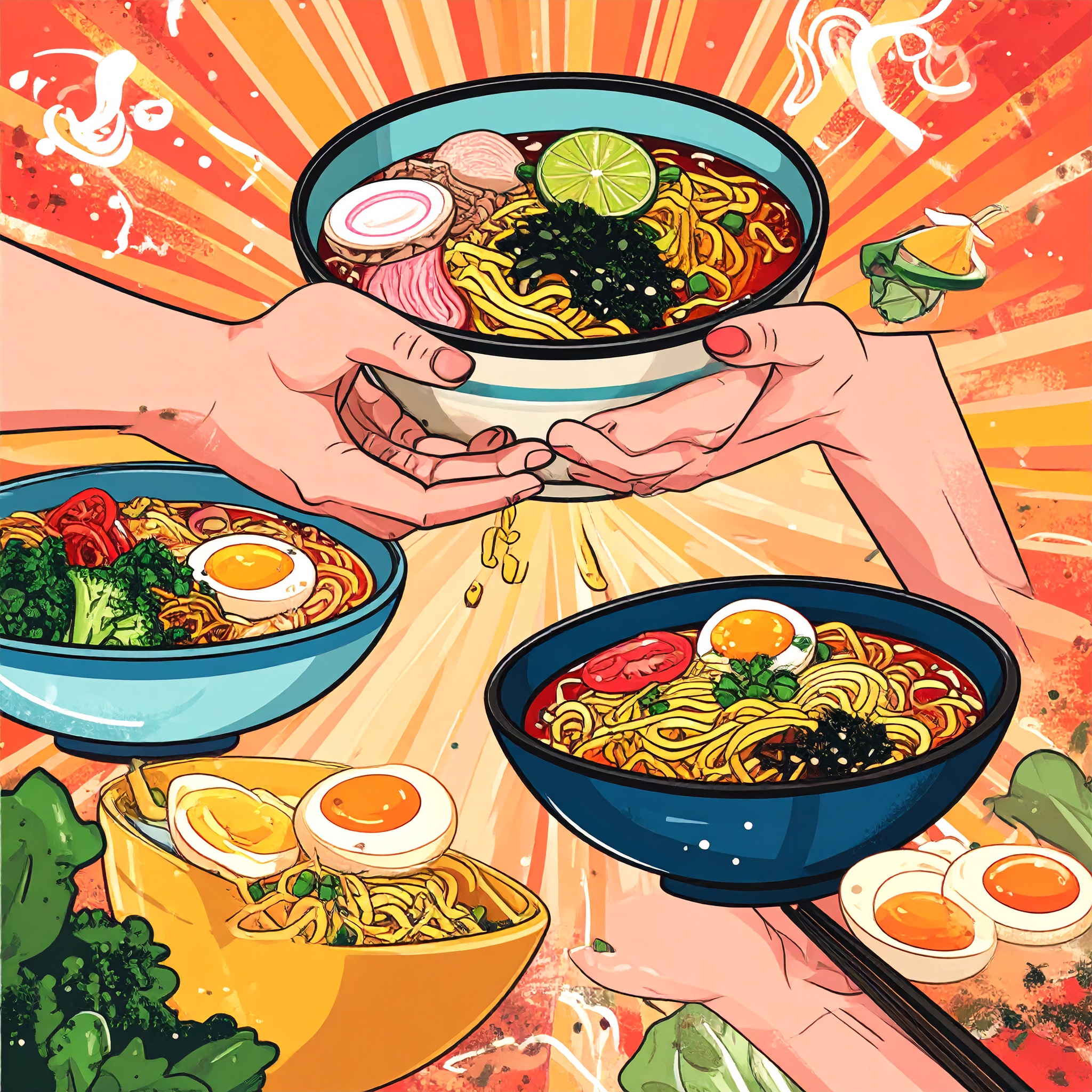“Where should we travel next?” — a journey designed around ramen, not landmarks. Rather than following the well-worn path of sightseeing and scenic views, what if your next journey across Japan were guided instead by ramen? This is the proposition at hand: a culinary route that celebrates the diverse, deeply rooted “local ramen” styles found throughout the country. Each bowl tells a story—of climate, history, and community—and by tasting your way through these regional expressions, one discovers the cultural richness of Japan in a profoundly flavorful way.
Hokkaido: Sapporo, Asahikawa, Hakodate
-
Sapporo Miso Ramen: A bold blend of miso, lard, and stir-fried vegetables—a hearty answer to Hokkaido’s snowy winters.
-
Asahikawa Shoyu Ramen: A double-layered broth of seafood and meat, paired with firm, curly low-hydration noodles.
-
Hakodate Shio Ramen: Elegant and clear salt-based broth harmonizing with delicate thin noodles.
Tohoku: Kitakata, Yamagata
-
Kitakata Ramen (Fukushima): Gentle soy broth with hand-massaged flat noodles—comforting and full of character.
-
Yamagata Chilled Ramen: A culinary innovation to counter the summer heat—an expression of Tohoku’s seasonal wisdom.

Kanto: Tokyo, Sano, Katsuura
-
Tokyo Ramen: A refined soy-based broth with medium-thin straight noodles—an elegant echo of post-war yatai (food stall) culture.
-
Sano Ramen (Tochigi): Smooth, chewy flat noodles crafted with traditional bamboo pressing techniques.
-
Katsuura Tantanmen (Chiba): A bold fusion of chili oil and sautéed onions—flavor with immediate impact.
Chubu: Toyama, Nagoya, Kanazawa
-
Toyama Black Ramen: Intensely dark soy broth with bold black pepper—so rich, it demands a side of rice.
-
Taiwan Ramen (Nagoya): A fiery blend of minced meat and chili—Nagoya’s answer to spice lovers.
-
Kanazawa Ramen: A mellow soy-black broth beautifully paired with Kaga vegetables and local delicacies.
Kinki (Kansai): Kyoto, Wakayama, Osaka
-
Kyoto Ramen: A harmonious blend of soy sauce, pork back fat, and fragrant Kujo green onions.
-
Wakayama Ramen: A distinctive marriage of pork-soy broth and the local tradition of hayazushi (early sushi).
-
Takaida-style Ramen (Osaka): Thick noodles with deeply seasoned soy broth—a beloved B-grade gourmet treasure.
Chugoku & Shikoku: Onomichi, Tokushima, Kochi
-
Onomichi Ramen (Hiroshima): A cinematic flavor—a light seafood broth accented by pork fat, evoking a sense of nostalgia.
-
Tokushima Ramen: Sweet and savory pork-soy broth topped with a raw egg—a signature of the region.
-
Nabeyaki Ramen (Kochi, Susaki): Served bubbling in a clay pot with a fresh egg—comforting and soul-warming.

Kyushu & Okinawa: Hakata, Kumamoto, Kagoshima, Okinawa
- Hakata Tonkotsu: A hallmark of ultra-thin noodles and the unique “kaedama” (noodle refill) culture, embodying the precision and elegance of Fukuoka’s culinary identity.
- Kumamoto Ramen: Intensified with “ma-yu” (black garlic oil), adding a bold, aromatic depth to its pork bone base.
- Kagoshima Ramen: A harmonious blend of rich tonkotsu, sweet undertones from local vegetables, and a mellow finish with bean sprouts—comfort in a bowl.
- Okinawa Soba (Special Mention): A cultural crossroads—chewy flat noodles in a dashi-infused pork bone broth, where traditional Okinawan cuisine meets ramen philosophy.
Summary: The concept of traveling through taste
Traveling for ramen reveals more than flavor—it becomes an immersive passage into local lifestyles, regional climates, and the agricultural and maritime backbone of Japan. This is gastronomy as cultural exploration.
By centering your journey around local ramen, you gain access to the unseen Japan—towns and traditions that rarely make it into conventional travel guides. It’s an invitation for the discerning traveler seeking authenticity and depth beyond tourist attractions.




